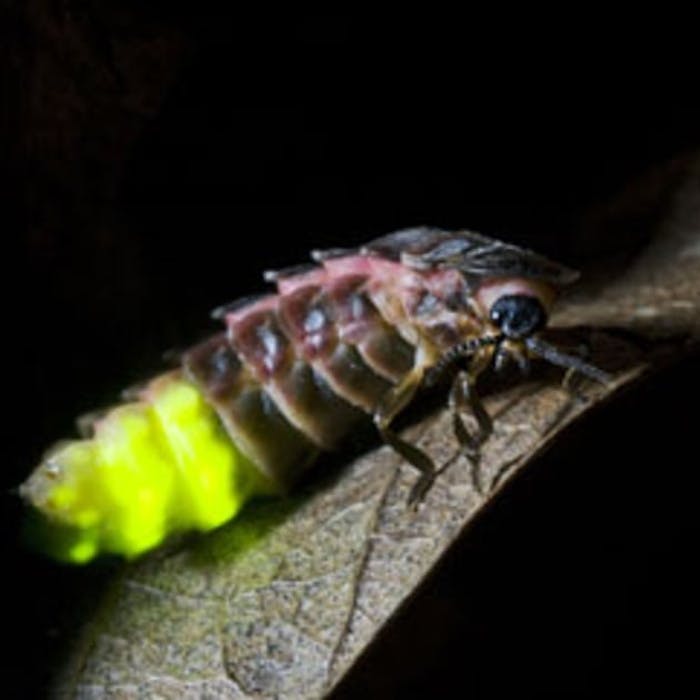
The magical glow worm
They look a bit like an elongated woodlouse, but, at night, in the summer, the magic happens: Britain's glow worms emit an eerie green glow from grass tips and bushes as the females announce their presence. Lampyris noctiluca is the glow-worm species most often seen in the UK.
Glow worms can be seen on almost any grassland type across much of mainland Britain. They can also be spotted in moorland, heathland and open areas of woodland. They're most common in the south of England.
These nocturnal beetles, known as common glow-worms, are found across Europe and Asia. Adult female glow-worms have a large, light-producing organ at the end of their abdomens. At night they use a bright, steady stream of yellowish-green light to attract flying males. During the day they burrow underground to avoid predators.
Common glow-worms live for two years. They hatch from eggs in late summer, grow a little by feeding on tiny snails, then hibernate through winter. They spend the next spring and summer growing, hibernate, then pupate the following spring, emerging as adults around June, mating, laying their eggs and then die.
They like a mixture of woodland and grass or scrub as the larvae feed on snails and like dense cover, whilst the adult females, which can't fly, need open space to glow and for the males to find them.
They are not officially endangered, but they are thought to be in decline. As they eat slugs and snails, glow worms are well worth encouraging to the garden.
Glow worms are best seen on June and July evenings, ideally on a still, warm evening with a crescent moon. Disused railway lines and country footpaths are said to be popular.
Further reading
Links to external websites are not maintained by Bite Sized Britain. They are provided to give users access to additional information. Bite Sized Britain is not responsible for the content of these external websites.
